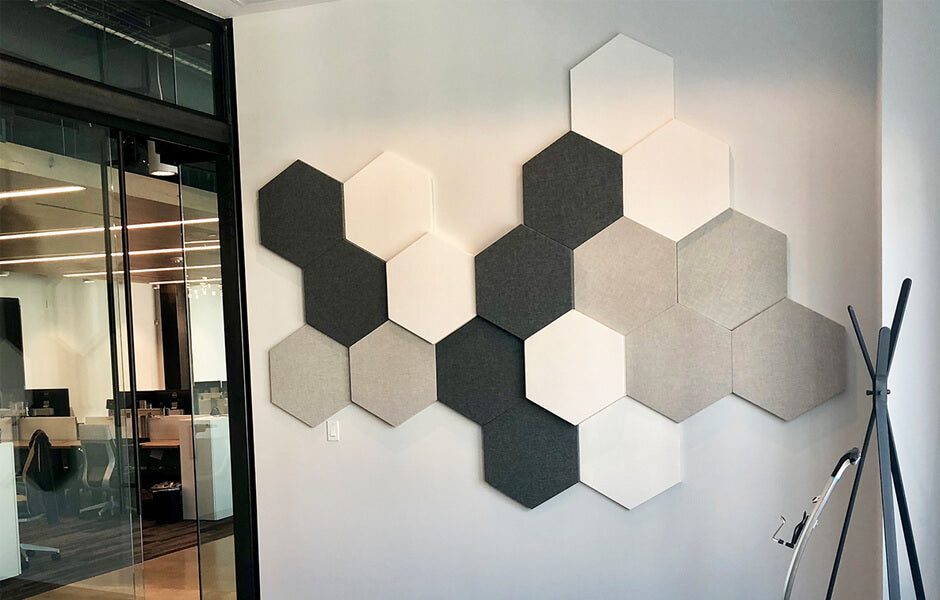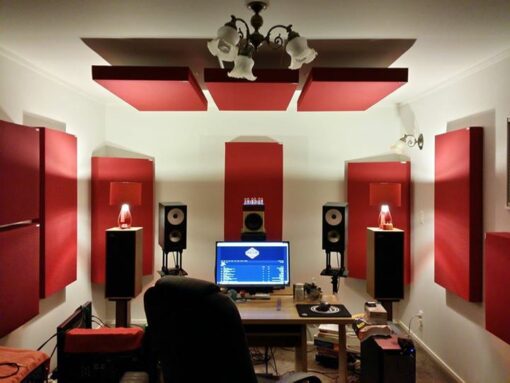Developing Harmony: Acoustic Solutions for a Balanced Setting
Developing Harmony: Acoustic Solutions for a Balanced Setting
Blog Article
Accomplish Perfect Harmony in your house With Reliable Soundproofing Techniques for Optimal Acoustics
Producing an environment of excellent consistency in your home entails greater than simply the aesthetics of style and design. Soundproofing plays a crucial duty in attaining optimal acoustics, influencing the means we experience and interact with our space. By understanding the basics of soundproofing, determining resources of sound disturbances, choosing ideal materials, and applying tested techniques, you can change your home right into a shelter of peace where sound boosts instead of disrupts. The trip to grasping soundproofing methods for ideal acoustics begins with a thoughtful strategy that balances capability and convenience, bring about an immersive acoustic experience that genuinely balances with your lifestyle.

Understanding Soundproofing Basics
What are the essential principles that underlie effective soundproofing strategies? Soundproofing is rooted in the understanding of exactly how audio waves travel and connect with different materials. The key to successful soundproofing depends on interrupting or taking in these acoustic waves to reduce their transmission from one space to another. This can be attained with various approaches, such as including mass to wall surfaces, floorings, and ceilings, sealing spaces and fractures to avoid sound leak, and using sound-absorbing materials like acoustic panels or carpets (acoustic solutions).
Comprehending the concept of sound transmission class (STC) scores is important in choosing the right products for soundproofing. The STC ranking gauges how well a material can decrease airborne audio transmission via it, with higher STC ratings suggesting much better soundproofing abilities. Furthermore, thinking about the impact of effect insulation course (IIC) ratings for minimizing impact sound, such as footsteps or furniture moving, can further boost the efficiency of soundproofing services.
Analyzing Sound Resources in Your Home
Building upon the foundational understanding of soundproofing principles, a critical step in reliable sound reduction within your home includes recognizing and evaluating the various sources of unwanted sound. Noise sources can be categorized into 2 primary types: air-borne sound, which includes noises like conversations, music, and tv, and effect sound, such as steps or things being dropped.
Furthermore, consider external resources of noise, such as website traffic, next-door neighbors, or nearby building and construction, which can also influence the acoustics within your home. acoustic solutions. Recognizing these sources will certainly aid you prioritize areas for soundproofing and choose the most effective services. By pinpointing the specific sound sources in your home, you can customize your soundproofing initiatives to attain optimal outcomes and create a more tranquil and harmonious living environment
Picking the Right Soundproofing Products
When selecting soundproofing materials for your home, it is important to prioritize effectiveness and compatibility with your certain sound concerns. Think about factors such as the kind of sound you are trying to obstruct, the degree of soundproofing needed, and the looks of the materials to guarantee they mix seamlessly right into your home.
One usual material for soundproofing is acoustic foam. This lightweight and flexible material is wonderful web link for absorbing mid to high-frequency audios, making it ideal for songs spaces, home movie theaters, or offices. An additional choice is mass-loaded plastic, which is effective in shutting out low-frequency sounds like website traffic or machinery noises. For walls and ceilings, soundproof drywall is a popular selection because of its ability to minimize noise transmission between spaces.
Drapes and carpets made from blog sound-absorbing materials are also effective in dampening sound, specifically in locations with tough surfaces that cause audio to jump about. Remember, the trick to effective soundproofing is choosing the right materials that address your specific noise problems while improving the total convenience and acoustics of your home.
Implementing Soundproofing Strategies
To properly apply soundproofing strategies in your house, it is crucial to start by analyzing the locations that are most prone to noise infiltration. Usual sources of noise can include external audios from website traffic, neighbors, or neighboring building, in addition to inner resources like devices, pipes, and enjoyment systems. As soon as you have actually recognized these areas, you can begin implementing soundproofing services customized to every particular area.

For even more substantial sound decrease, consider mounting soundproof drywall, double-glazed home windows, or resilient networks to separate vibrations. Additionally, reorganizing furnishings, adding bookshelves, or including sound-absorbing materials can further improve the acoustics of a room. By purposefully executing these soundproofing strategies, you can develop a quieter and more relaxed living atmosphere in your home.
Maintaining and Improving Acoustic Environment
After applying soundproofing methods to resolve noise infiltration in your home, the focus moves towards preserving and boosting the acoustic atmosphere to make certain a constantly calm living area. To maintain ideal acoustics, frequently examine soundproofing products for deterioration, guaranteeing they stay reliable in blocking unwanted sound. Keep doors and important link windows properly sealed to avoid sound leak and take into consideration adding climate removing or door moves for extra soundproofing.
Improving the acoustic environment can entail calculated positioning of furniture, carpets, and drapes to dampen audio reflections and mirrors. Using sound-absorbing products such as acoustic panels or foam can better enhance the overall audio quality in your house. acoustic solutions. In addition, integrating soft home furnishings like paddings and coverings can help in reducing sound echo, producing a more pleasant acoustic experience
In addition, buying sound-absorbing decoration aspects like bookshelves, tapestries, or plants can add to a well balanced acoustic atmosphere. Routinely decluttering your area can also protect against sound waves from bouncing off surfaces, eventually enhancing the general acoustics of your home. By consistently keeping and improving your acoustic environment, you can produce an unified and serene living room on your own and your household.
Conclusion
Finally, accomplishing excellent consistency in your home through efficient soundproofing methods is necessary for ideal acoustics. By understanding soundproofing fundamentals, evaluating noise resources, selecting the right materials, carrying out strategies, and maintaining the acoustic atmosphere, you can produce a serene and pleasurable space without unwanted noise disruptions. Prioritizing soundproofing initiatives can significantly improve the general lifestyle in your house.
Report this page